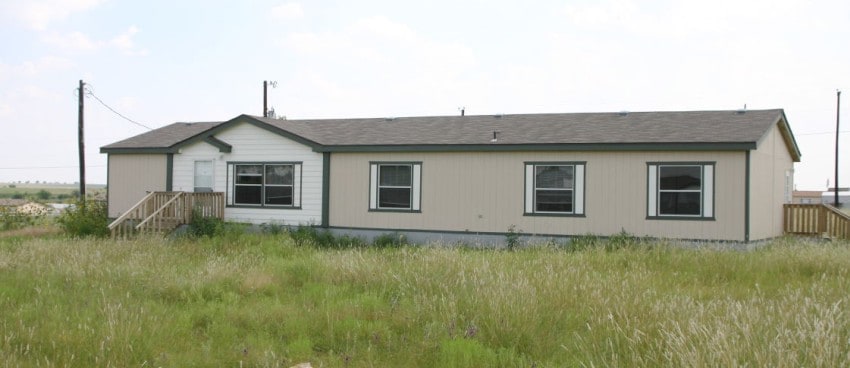The U.S. is nothing if not an inventive nation, so when demands for affordable housing reached epidemic stages in the 1920s, clever thinkers began to convert trailer coaches to residences for people who could neither afford to buy a house and land or even rent space for their families.

This situation sprung up again after veterans returned home from WWII. By the 1960s, manufactured mobile homes with rather sophisticated interiors had created a new housing niche that remains today a popular option for home buyers.
The current state of manufactured housing
According to the Manufactured Housing Institute’s statistic-gathering arm, “Manufactured housing is already a major part of the solution to the nation’s lack of affordable housing.”
The nonprofit association claims that around 22 million people in the U.S. were living in manufactured homes as of 2018 and this type of residence remains “the least expensive kind of housing available without a government subsidy” in today’s market.
The manufactured home redefined
Search for a definition of manufactured home and you will run into two distinct types: prefabricated or modular homes (walls, floor and roof are manufactured at factories and transported to an empty lot) and today’s equivalent of a mobile home, differentiated by the U.S. Housing and Urban Development Department when legislation was passed in 1976.
Only the latter can be relocated because prefabricated structures are designed to be installed on foundations or other types of anchors. Both are eligible to be insured under the same policy language, say State Farm Insurance officials .
Pros of buying a manufactured home
Whether it’s a prefabricated structure or a mobile unit, the simple benefit of owning one’s own home is at the top of the list for families considering purchasing a manufactured home, thus saving on rent and making an investment in a place that one can someday own outright is one of the main reasons people buy these products.
Because both types of manufactured home are built within the confines of an indoor facility, weather changes and external factors that can either delay or stall completion of the home are rarely experienced.
This is a huge benefit to people living in areas of the nation plagued by dramatic weather patterns that literally close down the process of standard home construction for months on end.
Further, every manufactured home meets stringent quality control standards during its construction, and third-party inspections are mandated by law before either leaves the facility. Homeowners can feel confident that safety measures have been addressed, too.
In sum, the amount of value a buyer gets when purchasing either type of manufactured home is measurable.
Some purchasers can buy their homes for cash because price tags are affordable. This means they can live mortgage free, worrying only about real estate taxes on parcels of land bought to host the house or monthly mobile park lot rent.
For homeowners committed to keeping up maintenance and improvements, a rise in the value of either home type is likely if the market stays stable, so resale potential is strong.
Cons of buying a manufactured home
For savvy marketers who believe the difference between success and failure is “location, location, location,” the same principle can be applied when evaluating the difference between the construction of a manufactured home in a well-maintained community and one that’s built in an area that is suffering a decline in value.
Mobile home shoppers can visit mobile parks that are of interest in cities and urban communities to evaluate these properties.
While placing a mobile home within the confines of a trailer park may be ideal at first, it takes next to no time for resold units to change the complexity of the neighborhood should newcomers to be less than diligent about maintaining their yards and environs. A change in park management and/or ownership my also impact a site.
Neighborhood standards aside, buying a manufactured home means your abode will suffer from what is known as “the cookie cutter syndrome.”
The likelihood that your residence will look exactly like those of others on your block is high, and though interior design can be customized during the construction process for a price, companies may not be willing to make more than rudimentary changes.
And while manufactured homes hold their value in some communities, that’s not always the case in others, which is why many real estate professionals advise folks shopping for mobile homes to think of the home they intend to acquire in the same way they view their car: a tangible asset that can depreciate.
As a final note, some markets are hotter than others – particularly areas where land values are escalating, which can cause mobile home park owners to decide that they can make more money selling the property than they can collecting lot rents.
In California alone, mobile home parks are disappearing at a rate of nearly 5,000 annually. And regardless of state, landlords have every right to raise monthly lot rents annually.
Resources
https://www.newhomesource.com/guide/articles/benefits-of-buying-a-manufactured-home-versus-renting
https://homeguides.sfgate.com/pros-cons-buying-manufactured-housing-47394.html
https://www.realtynow.com/buy-home/buying-mobile-home-advantages-disadvantages
Related Posts
- Comparison of Shiplap vs “Tongue and Groove” vs Beadboard Wall Paneling
- Comparison of Manufactured vs Modular Homes with Pros/Cons
- 10 Different Types of Glass for Home Windows (With Pros and Cons)
- Here Are The Main Pros and Cons of a Barndominium House
- Main Advantages and Disadvantages of Vaulted Ceilings for Homes
- Top 9 Drywall Alternatives for Your Home Ceiling (With Photos)
Leave a Reply